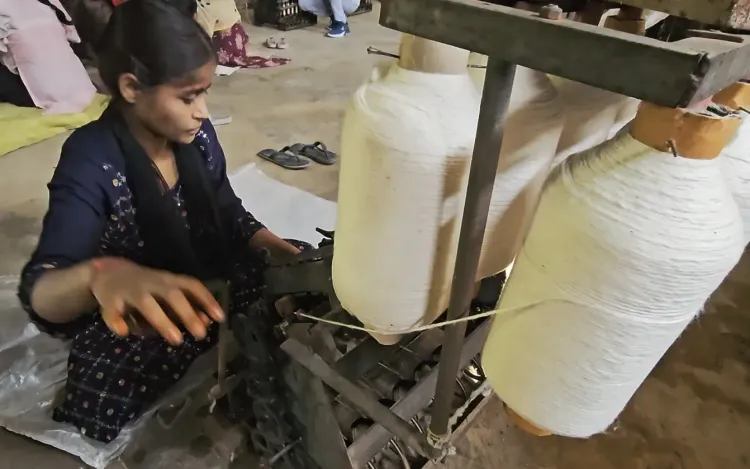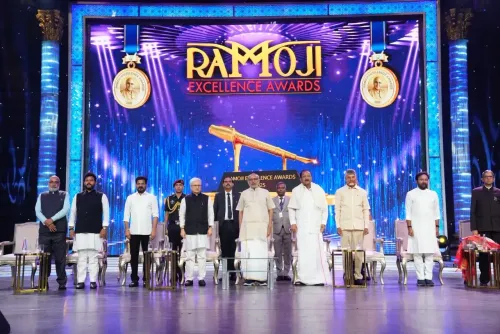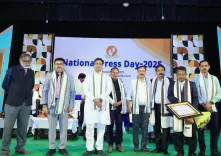How Do Weavers in UP’s Mahoba Keep Gandhi’s Vision Alive?

Synopsis
Key Takeaways
- Continuation of Gandhi's Legacy: The centre embodies Mahatma Gandhi's vision of self-reliance.
- Empowerment of Women: Women play a crucial role in the khadi production process.
- Community Impact: Over 200 families benefit from this initiative.
- Government Support: Subsidies help sustain the Khadi movement.
- Symbol of Dignity: Khadi represents national pride and cultural heritage.
Mahoba (Uttar Pradesh), Oct 1 (NationPress) In the heart of Jaitpur village, situated in the Mahoba district of Uttar Pradesh, the sound of the spinning wheel resonates with the vision of Mahatma Gandhi. He personally visited this region in 1920 to establish a Khadi Gramodyog (village industry) centre. Over a century later, this centre—Shri Gandhi Ashram Utpadan Kendra—continues to honor his dream.
This centre was founded on Gandhi's principle of self-reliance through cottage industries, especially aimed at aiding the rural poor. At the time, he was accompanied by freedom fighter and Gandhian leader Acharya J. B. Kripalani. This initiative sparked a khadi revolution in the region, leading over 200 local families to adopt spinning and weaving for their livelihoods.
At one time, nearly every family in the village owned a charkha, and spinning yarn became a way of life, symbolizing national pride.
Even after India attained Independence, khadi remained the primary income source for families in Jaitpur. The government continued to bolster the movement by providing subsidies to the Khadi centre. Raw cotton is still sourced, spun into fine thread on the charkha by women artisans, and then woven into cloth by skilled weavers. The finished fabric is meticulously washed and distributed to the market via the centre’s network.
Shivani, a weaver at the centre, states, “After completing household chores, I come here to spin yarn. It allows me to contribute to my family’s income.” Another artisan, Parveen, shares, “This work connects us to our heritage and provides us with dignity and self-sufficiency.”
Sonia, who also operates the charkha, expresses, “We earn our living by spinning yarn, which has become an integral part of our daily routines.”
Shyamle, who manages the charkhas and the operations of the centre, elaborates on the process: “Women hand-spin yarn on the charkha, which is then handed over to weavers. The fabric is washed and sent to shops for sale.”
Dhanprasad Vishwakarma, the manager of the centre, reveals that currently 15 to 20 charkhas are operational, primarily run by women who come after fulfilling their household responsibilities.
“We receive wool, spin it into yarn on the charkha, and pass it to weavers who utilize handlooms. After washing, the fabric is dispatched to the market,” he explains.
Brajmohan Nayak from Khadi and Village Industries underscores the ongoing significance of this legacy: “Gandhiji's vision was to empower the impoverished through self-employment. This centre continues to uphold that legacy even today.”
More than a hundred years later, this tranquil village in Mahoba still embodies the spirit of Gandhian philosophy, demonstrating that khadi is more than just fabric—it is a movement of empowerment, dignity, and self-reliance.









